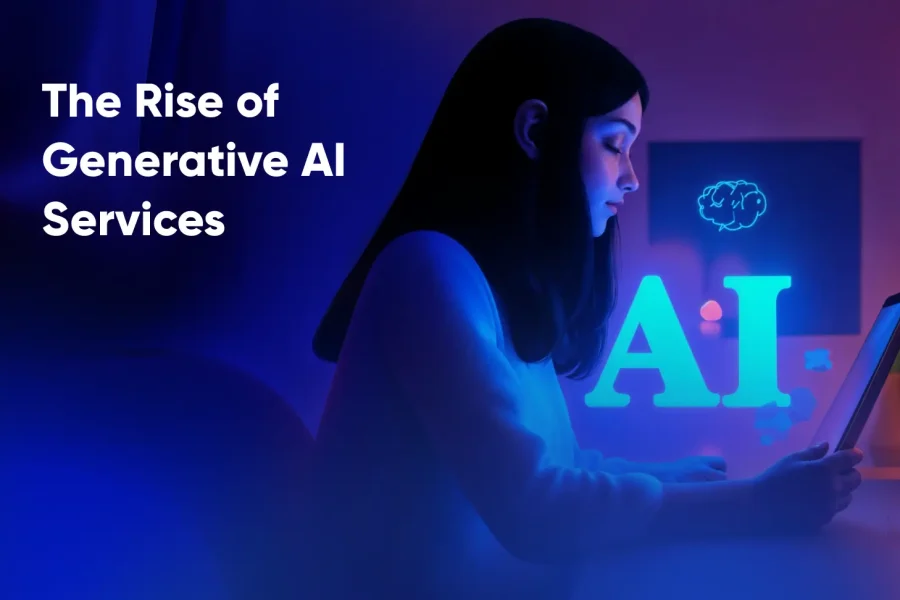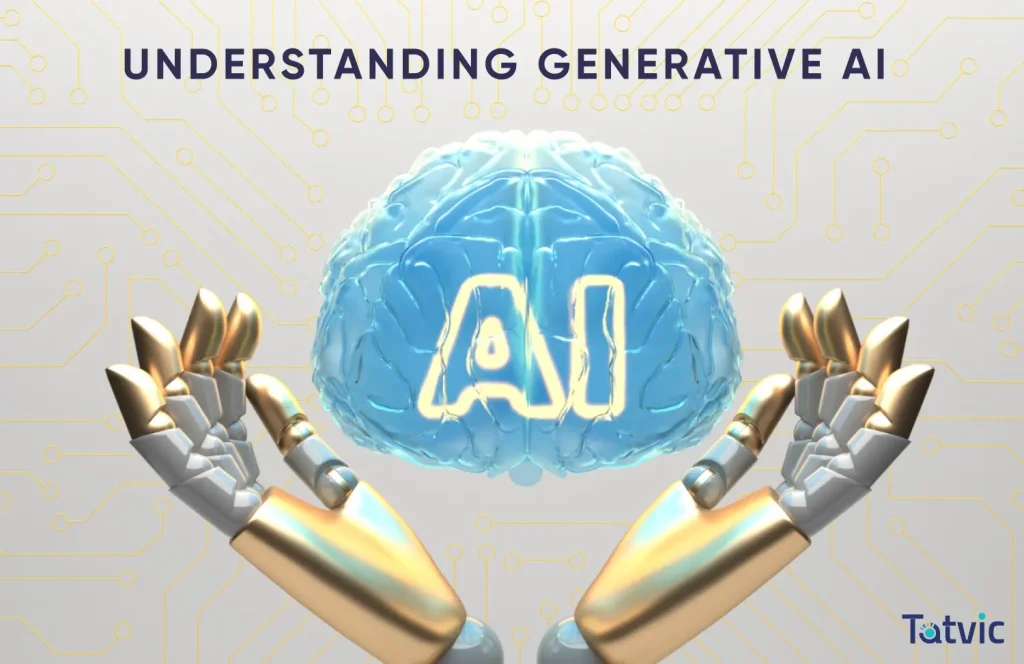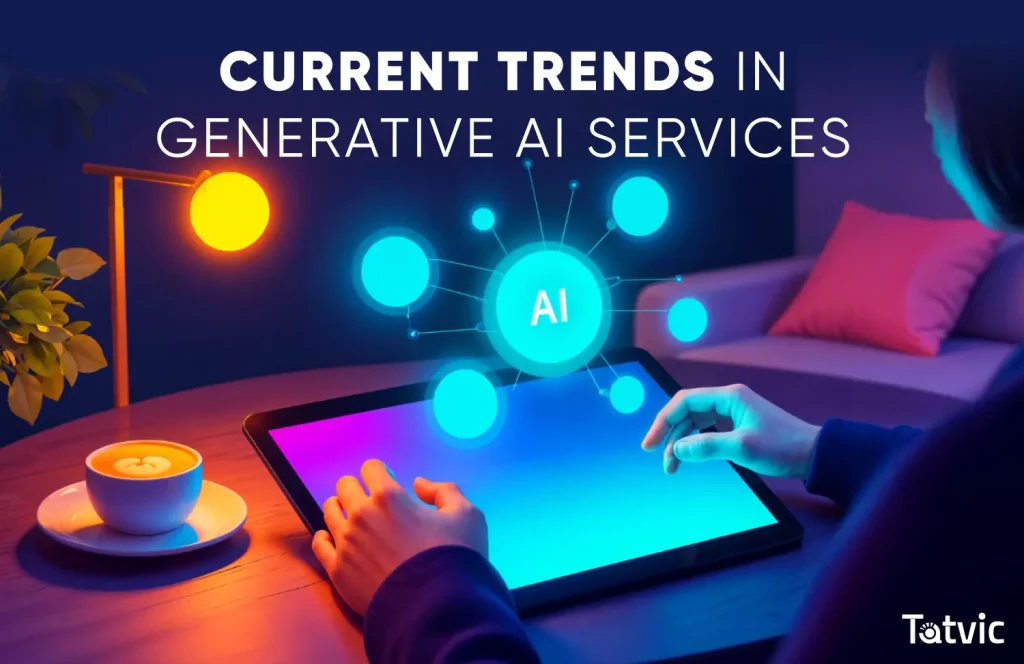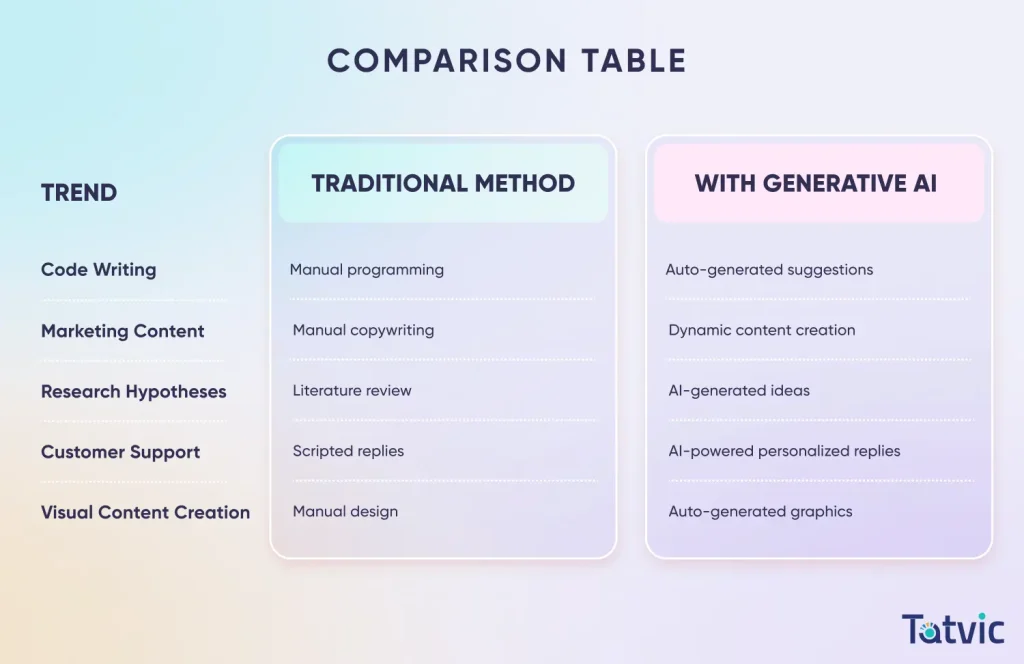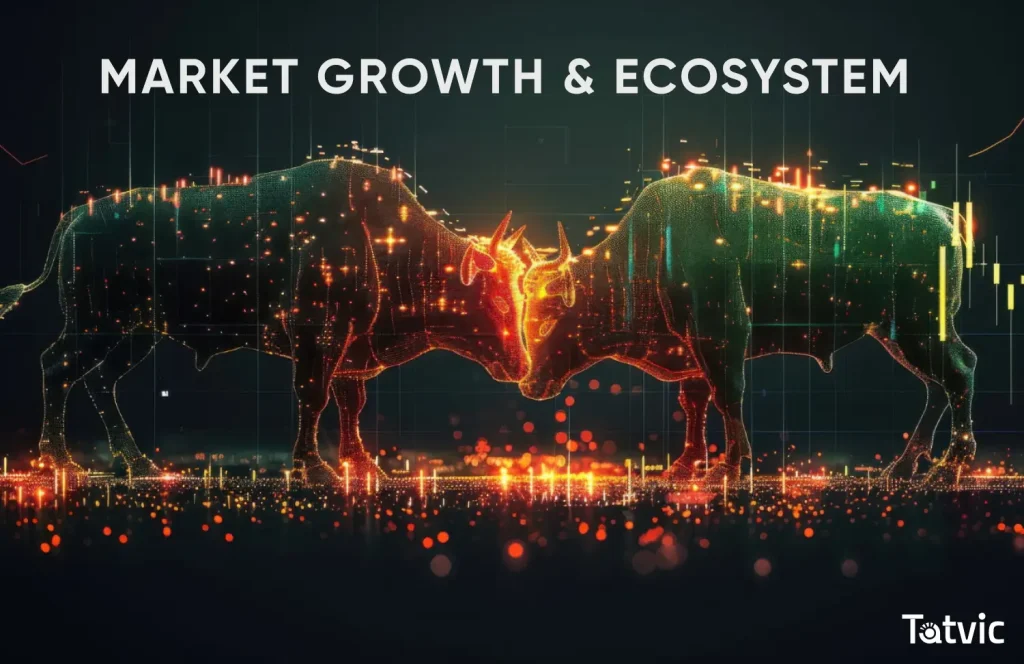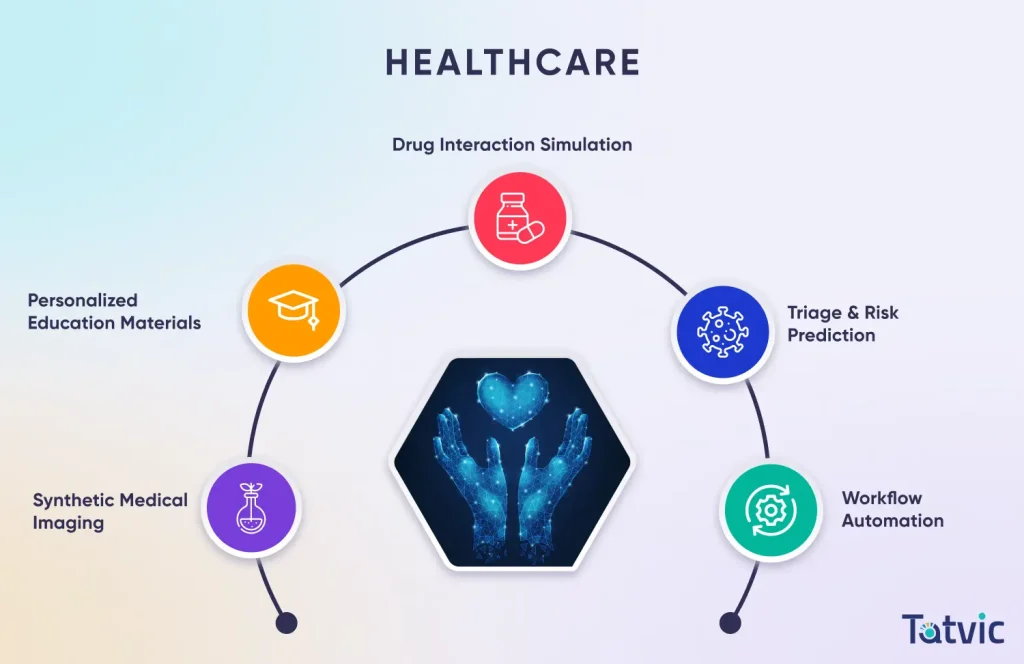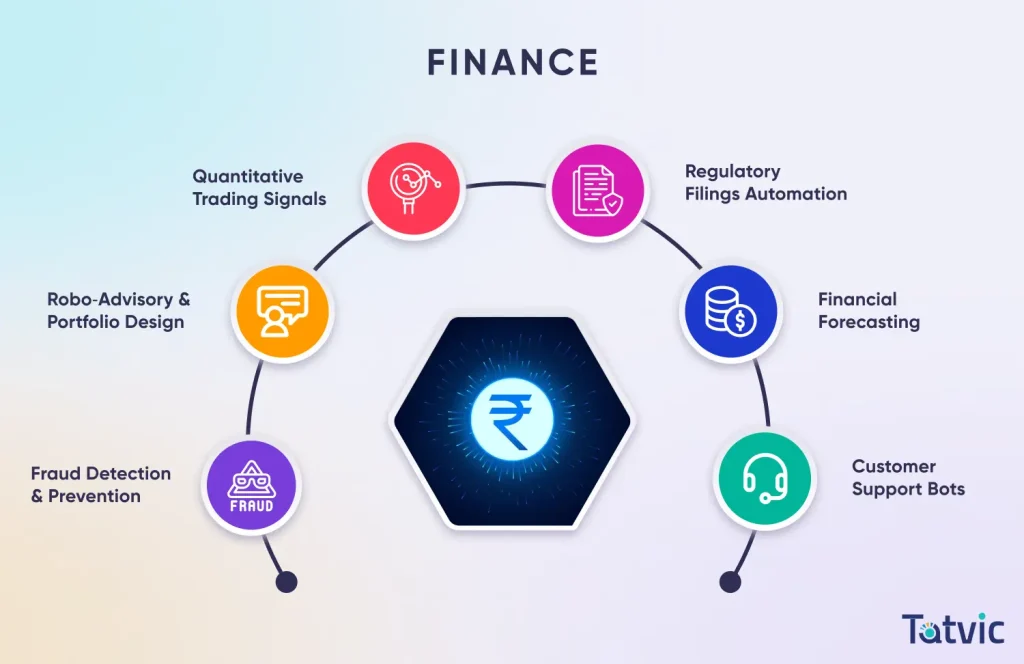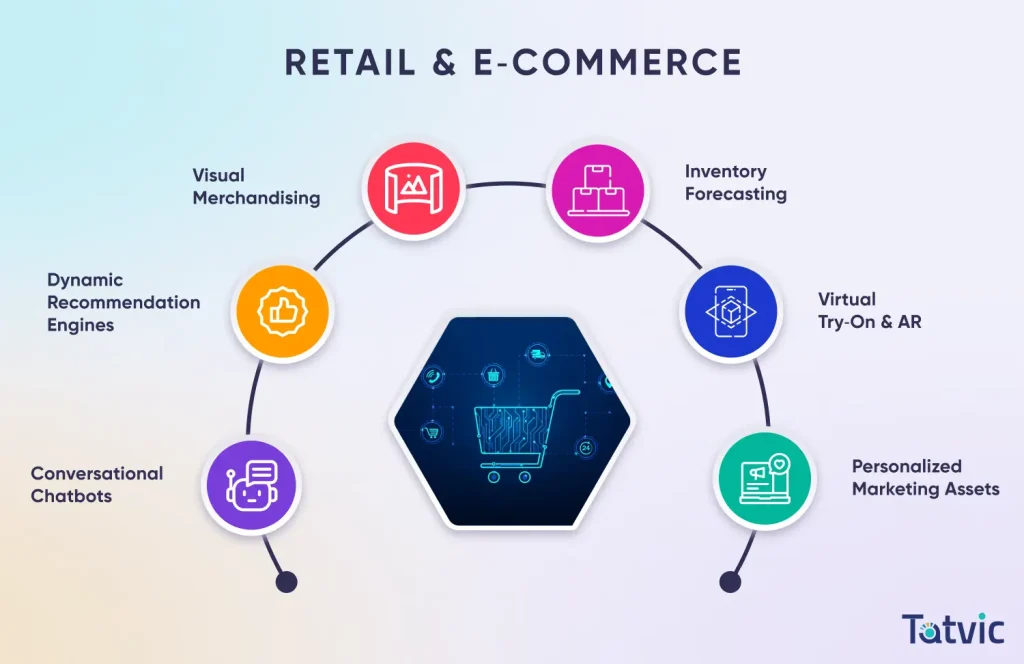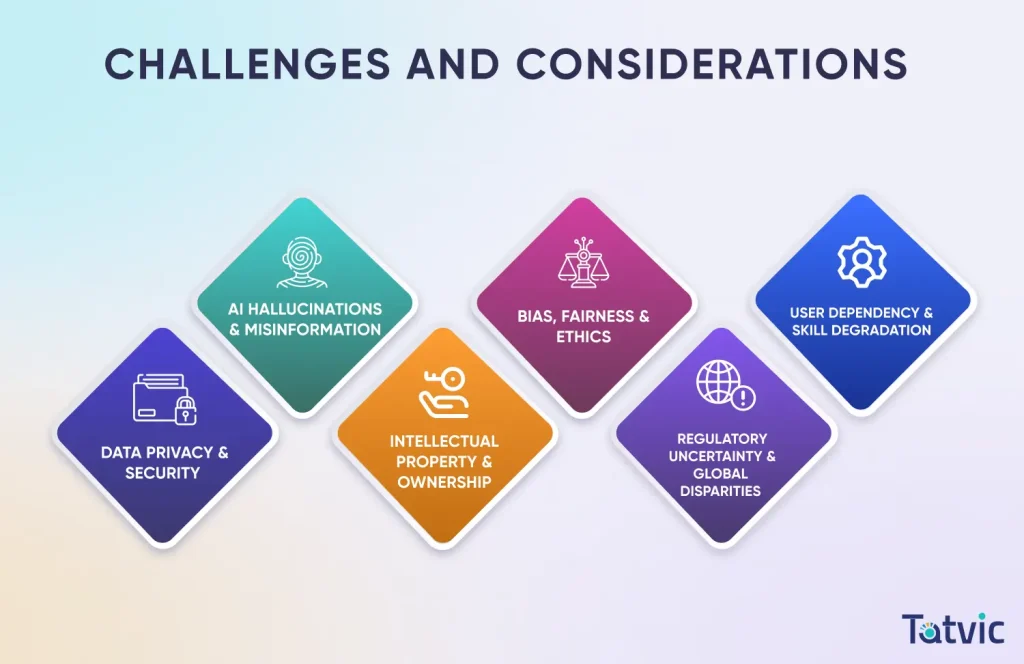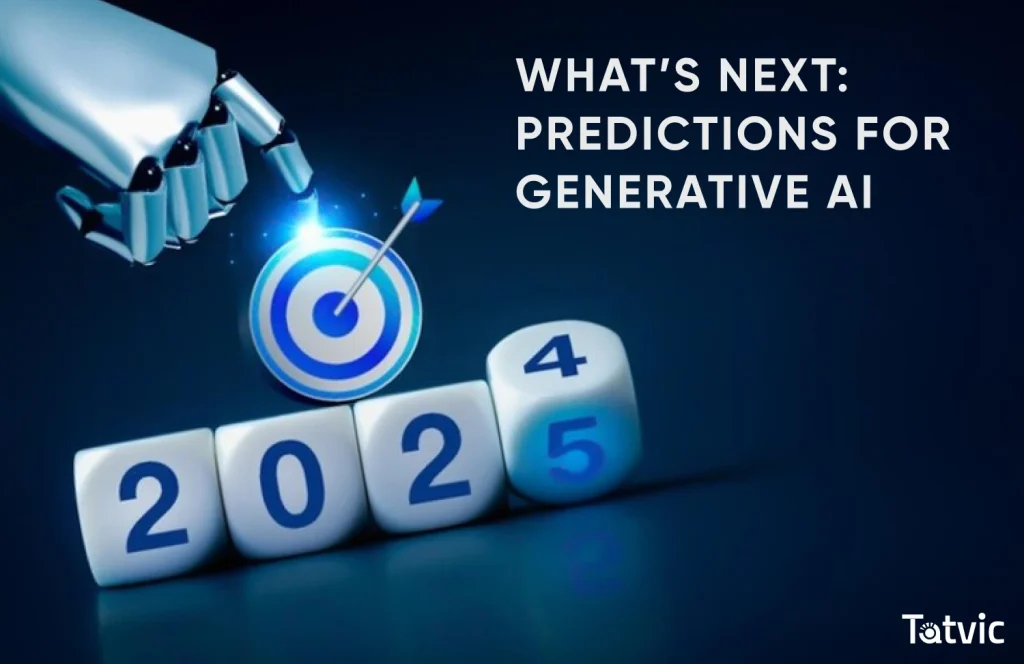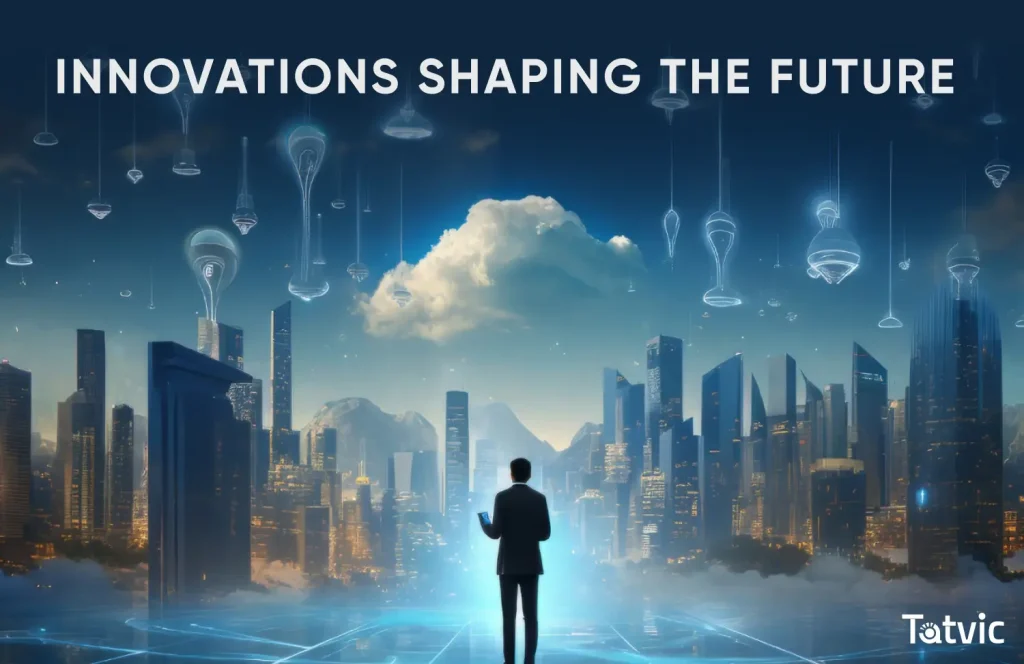What do you think the Rise of Generative AI Services is a Revolutionary Disruption or Just Another Tech Bubble Waiting to Burst?
Let’s deep dive…
The global Generative AI market is projected to reach $109.37 billion by 2030, growing at a CAGR of 35.6%
~Grand View Research, 2024
Why Generative AI Services Matter in Today’s World?
Generative AI has rapidly evolved from academic curiosities into mission‑critical engines of creativity, automation, and strategic growth.
What once began as niche research in neural networks now powers marketing campaigns that adapt in real time, fuels biotech discoveries of novel compounds, and transforms how teams ideate and execute.
A New Frontier of Collaboration
Think of Generative AI as an intelligent collaborator, one that can imagine, prototype, and optimize alongside human teams.
From generating hyper‑realistic product visuals to drafting personalized outreach emails or surfacing scientific insights from massive datasets, Gen AI services are reshaping workflows and expanding what’s possible.
In this space, we’ll discuss Gen AI’s evolution, examine today’s hottest trends & breakthroughs and peer into the innovations and challenges ahead.
Let’s Deep Dive into Generative AI –>>
What Is Generative AI (GenAI)?
Generative AI refers to models and subset of AI services designed to create new content whether that’s text, images, audio or structured data by learning patterns from existing examples. Unlike traditional AI systems that classify or predict, Gen AI generate fresh outputs in response to prompts.
To function effectively, Generative AI relies on foundational models that power its capabilities across different domains.
Here are the core building blocks that make it all possible:
1. Large Language Models (LLMs)
These are powerful AI systems trained on enormous volumes of text to understand and generate language that feels natural.
- What they do: They can write articles, summarize content, answer complex questions, or even generate computer code.
- Real-world use: Tools like GPT-4 help power AI chatbots, writing assistants, coding helpers, and more.
2. Diffusion Models
These models create images from text by starting with random noise and gradually refining it into something meaningful.
- What they do: Give them a description like “a sunset over the mountains in watercolor style,” and they’ll generate a matching image.
- Real-world use: Used for creative tasks such as designing visuals, generating digital art, and building content for marketing or entertainment.
3. Reinforcement Learning (RL)
This training technique teaches AI by rewarding good decisions and learning from mistakes over time kind of like how humans learn new skills.
- What they do: The model keeps improving its behavior by experimenting, getting feedback, and adjusting.
- Real-world use: It’s used in areas like robotics, game development, and improving the quality of AI responses in conversational tools.
Understanding how Generative AI works helps decode their capabilities: you feed a prompt or dataset into the model, and it returns novel content that reflects learned patterns. This contrasts with more “narrow” AI services like recommendation engines that focus on selecting from existing items. Generative AI services imagine rather than just analyze, it opens the door to applications that were previously out of reach.
Current Trends in Generative AI Services
Generative AI services are evolving rapidly, with innovations driving content creation, personalization and automation across industries.
These trends are shaping how businesses engage users and streamline creative processes.
Let’s explore few of the Key Trends:
1. Multimodal AI Systems
Modern Gen AI services are multimodal, handling text, images, and audio in one go. Platforms like GPT‑4 and Gemini let you upload a product photo and instantly receive ad copy, video scripts, and hashtags. This convergence streamlines creative workflows across teams.
Key Benefits:
- Unified Inputs & Outputs: Process multiple data types in one request.
- Cross‑Functional Efficiency: Designers, writers, and developers work from the same AI‑driven brief.
- Rapid Prototyping: Turn a single asset into text, video, and more without switching tools.
2. AI‑Powered Code Generation
Developers use services like GitHub, Copilot and Code Whisperer to auto-complete code, catch errors, and scaffold modules. By handling repetitive tasks and adhering to team conventions, these tools let engineers focus on critical problem-solving.
Workflow Improvements:
- Starter Code Generation: Replace manual boilerplate with AI‑scaffolded templates.
- Instant Code Review: Get on‑the‑fly feedback and style suggestions within your IDE.
- AI‑Driven Debugging: Spot errors and edge cases faster than traditional tracing.
3. Hyper‑Personalized Marketing
Generative AI enables marketers to craft personalized emails, landing pages, and chatbot replies at scale. By analyzing user behavior in real time, it boosts engagement and conversions without manual effort.
Capabilities at a Glance:
- Dynamic Email Content: Personalized subject lines and body copy per recipient.
- Segmented Landing Pages: Auto‑assembled layouts and offers for each audience cohort.
- Live Chatbot Scripting: Context‑aware responses that adapt mid‑conversation.
4. AI in Scientific Discovery
R&D teams leverage Generative AI to mine scientific literature, design experiments, and propose novel molecules or hypotheses. These tools accelerate breakthroughs so researchers can focus on validation and real‑world impact.
Applications in Research:
- Literature Mining: Summarize thousands of papers to surface key insights.
- Hypothesis Generation: Propose new molecular structures or material compositions.
- Experiment Design: Auto‑draft protocols and workflows for lab testing.
5. Market Growth & Ecosystem
Generative AI is no longer just a buzzword, it’s a booming business.
In just a few years, investments have skyrocketed from pilot projects to multi-billion-dollar commitments.
By 2027, global spending on cloud-based Gen AI services is expected to surpass $20 billion, which is reflecting a compound annual growth rate of 85.9% from 2023 to 2027.
Companies of all sizes, from enterprise giants to growing startups are jumping in, building teams dedicated to AI strategy, governance, and integration.
What’s driving this wave?
It’s never been easier to get started!
Thanks to pre-trained models, plug-and-play APIs, and “AI as a Service” platforms, even small businesses can launch custom AI workflows in days, not months. Barriers to entry are falling fast.
Meanwhile, a dynamic ecosystem of vendors is expanding the playing field. You’ve got:
- Tech giants offering end-to-end AI platforms,
- Agile startups solving niche use cases, and
- Specialist consultancies fine-tuning models for specific industries.
Whether you’re just beginning or scaling Gen AI across teams, there’s a service partner ready to meet your needs while keeping compliance and governance top of mind.
And it’s not just tools that are evolving the talent landscape is too. Universities, online platforms, and bootcamps are training the next wave of Gen AI talent. Companies are investing in employee upskilling and running internal innovation challenges to build real-world expertise.
Bottom line: the ecosystem is growing rapidly and the winners will be those who not only deploy Gen AI but scale it strategically, responsibly, and with people at the center.
Gen AI Innovations Shaping the Future
Generative AI services are leaping forward, fueled by smart specialization, ethical guardrails and tools that put creative superpowers in everyone’s hands.
Here’s what’s turning heads right now:
1. Specialized AI Models
No more one‑size‑fits‑all!
Today’s Gen AI services include domain‑specific models pre‑trained on niche datasets like medical journals or legal briefs. You get outputs that are accurate, compliant, and ready to use without endless fine‑tuning.
These models are:
- Trained on industry data (healthcare, finance, engineering)
- Reduces manual review and post‑processing
- Ensures sector‑appropriate terminology and style
2. Ethical & Explainable AI
As AI moves into high‑stakes workflows, trust is non‑negotiable.
Ethical Gen AI services bake in bias checks, privacy safeguards, and clear reasoning so you can see exactly how a suggestion was generated.
These AI Agents can:
- Bias mitigation layers to flag unfair outputs
- Data‑privacy protocols aligned with GDPR, HIPAA, etc.
- Self-explanatory dashboards that trace decision path
3. AI‑Native Creative Tools
Designers and marketers rejoice platforms like Adobe Firefly, Runway, and Canva now embed Gen AI services for instant, on‑brand variations. They can think banner ads in seconds, video cuts on demand, and automated brand‑compliant layouts.
These tools can also help in:
- One‑click generation of color palettes, layouts and copy
- In‑app controls to tweak style, tone and format
- Accessibility for non‑technical users; no coding required
These innovations aren’t just cool, they’re reshaping workflows, boosting productivity, and making Generative AI services indispensable across every industry.
Industry Applications of Generative AI Services
Generative AI services are no longer confined to labs. They’re delivering real value in sectors as diverse as healthcare, finance, and retail.
By automating complex tasks, personalizing experiences and accelerating decision‑making, these AI services help organizations stay agile and customer focused.
Let’s see How Generative AI Services Are Revolutionizing Key Industries:
1. Gen AI Services in Healthcare Industry
Generative AI services are transforming patient care from diagnosis to discharge. By creating realistic synthetic data, automating content, and predicting treatment outcomes, they help providers deliver faster, more accurate, and more empathetic care.
Let’s See Few More Use Cases:
- Synthetic Medical Imaging: Generate diverse, anonymized scans for radiologist training and AI model calibration.
- Personalized Education Materials: Auto‑draft tailored guides, discharge instructions, and medication reminders.
- Drug Interaction Simulation: Use specialized models to propose molecular structures and predict efficacy, cutting R&D cycles.
- Triage & Risk Prediction: Analyze symptoms and vitals to flag high‑risk cases and prioritize interventions.
- Workflow Automation: Populate EMRs, schedule appointments, and streamline billing with AI‑generated summaries.
2. Gen AI Services in Finance Industry
In a sector where milliseconds and compliance matter, Generative AI services drive speed, accuracy, and transparency. From detecting fraud patterns to generating regulatory reports, these AI tools help financial institutions stay competitive under volatile conditions.
Let’s See Few More Use Cases:
- Fraud Detection & Prevention: Identify anomalous transactions in real time using generative anomaly‑detection models.
- Robo‑Advisory & Portfolio Design: Craft personalized investment strategies and dynamically rebalance portfolios.
- Quantitative Trading Signals: Generate algorithmic trading ideas by synthesizing market, news, and social‑media data.
- Regulatory Filings Automation: Auto‑draft compliance documents, risk disclosures, and audit reports.
- Financial Forecasting: Produce scenario‑based revenue and expense projections to guide strategic planning.
- Customer Support Bots: Power natural‑language assistants to answer account queries and guide users through transactions.
3. Gen AI Services in Retail & E‑commerce Industry
From first site visit to final checkout, Generative AI services elevate every step of the customer journey. By personalizing product discovery, optimizing inventory, and automating content, they help retailers capture attention and drive conversion.
Let’s See Few More Use Cases:
- Conversational Chatbots: Engage shoppers with context‑aware recommendations and real‑time support.
- Dynamic Recommendation Engines: Suggest products based on user behavior, mood, or visual similarity.
- Visual Merchandising: Auto‑generate banners, carousels, and style guides tailored to seasonal trends.
- Inventory Forecasting: Analyze sales history, social buzz, and market signals to optimize stock levels.
- Virtual Try‑On & AR: Create AI‑generated overlays for apparel, accessories, or cosmetics directly in‑browser.
- Personalized Marketing Assets: Auto‑draft email campaigns, SMS offers, and social posts that reflect user preferences.
By embedding Generative AI services across these industries, organizations not only streamline operations but also unlock new avenues for innovation and customer delight.
Challenges and Considerations of Using Generative AI Services
Generative AI services unlock new possibilities, but they also introduce risks that impact trust, compliance, and user skills.
Below are the top challenges with a concise overview and practical pointers:
1. Data Privacy & Security
Generative models train on massive datasets sometimes including sensitive or proprietary information raising concerns about unauthorized data use and leaks.
Key Considerations to keep in mind:
- Ensure GDPR/HIPAA/DPDP compliance with clear opt‑in policies
- Anonymize or pseudonymize training data before use
- Implement strict access controls and audit logs
2. AI Hallucinations & Misinformation
Since these models predict text based on patterns rather than facts, they can “hallucinate” plausible-sounding but incorrect outputs.
Key Considerations while facing such issue:
- Require human review for high‑stakes content (health, finance, legal)
- Use models with built‑in fact‑checking or citation features
- Establish a validation process before publishing AI‑generated material
3. Intellectual Property & Ownership
AI-generated outputs often draw on copyrighted source material, creating uncertainty around who owns and can monetize the results.
Key Considerations to tackle the same:
- Clarify licensing terms with your AI provider
- Train models on properly licensed or public‑domain datasets
- Monitor evolving AI/IP case law to stay compliant
4. Bias, Fairness & Ethics
Models inherit biases from their training data, which can perpetuate stereotypes or unfair treatment of certain groups.
Mitigation Strategies which you can follow:
- Use diverse, representative datasets during training
- Conduct regular bias audits and impact assessments
- Leverage explainable AI tools to trace and justify outputs
5. Regulatory Uncertainty & Global Disparities
AI policies are patchy: some regions prioritize privacy, others focus on innovation, leaving gaps that can enable misuse or create unequal access.
Navigating Regulations:
- Track major frameworks (EU AI Act, U.S. guidance, India’s DPDP)
- Build flexible compliance processes that adapt to new rules
- Partner with local experts to understand regional nuances
6. User Dependency & Skill Degradation
Over‑reliance on AI can lead to deskilling of writers, designers and analysts may lose core competencies if they defer too much to automated outputs.
Best Practices which you can follow to avoid Skill Degradation in the Generative AI Era:
- Encourage human‑in‑the‑loop workflows with periodic manual checks
- Provide training on when and how to override AI suggestions
- Balance AI usage with projects that build critical thinking and creativity
What’s Next: Future of Generative AI (Gen AI)
We’re only scratching the surface of what Generative AI services can do!
As research accelerates and adoption expands, the next decade promises advances that will feel both dazzling and daunting.
Here’s a closer look at the big‑picture trends set the future of Gen AI services:
-
The Quantum Leap: AI Meets Quantum Computing:
Quantum computing has long been the holy grail of tech, and pairing it with Generative AI could be transformative. Quantum processors will handle exponentially larger datasets in parallel, slashing training times for complex models. Imagine real‑time drug discovery simulations, ultra‑personalized medicine tailored to your genome, or AI‑generated films rendered in seconds rather than hours.
-
AI Copilots in Every SaaS Tool:
We’ve already met Copilots in Microsoft 365 and Notion AI, but the trend is just beginning. Soon, every business application—from CRMs to HR platforms will feature an embedded AI assistant that drafts emails, automates reporting, and even formulates strategic recommendations. These copilots will blur the line between user and tool, making Generative AI feel like a natural extension of daily workflows.
-
The Open‑Source Renaissance:
While big tech still leads the charge, open‑source communities are democratizing access to powerful Gen AI models such as Mistral, LLaMA, and Falcon. Organizations can finetune these transparent, cost‑effective models on their own data, reducing reliance on proprietary platforms. This shift will empower startups, governments, and nonprofits to innovate without surrendering control of sensitive information.
-
Mature and Adaptive Regulation:
After years of lagging behind innovation, policy is catching up. Expect unified frameworks for ethical AI use, data protection, and IP rules anchored by the EU’s AI Act and pilot programs in the U.K., Canada, and Singapore. We may even see certification programs that validate whether an AI service is explainable, biased or both.
-
Emotionally Intelligent AI Systems:
Current Gen AI can mimic tone but doesn’t truly “feel.” Advances in affective computing aim to change that, enabling AI to detect sentiment, stress, and mood in real time. Future applications could include emotion‑aware customer service bots, virtual therapists, and interactive learning companions that adapt to your emotional state.
-
Self‑Learning and Continuous Improvement:
The next generation of Gen AI services will learn continuously from user feedback, refining their outputs without requiring costly retraining cycles. Picture a writing assistant that adapts to your voice over months or a design tool that evolves based on how customers engage with your layouts always improving, always relevant.
In a Nutshell
Generative AI has come a long way, from proof‑of‑concept demos to indispensable tools that drive innovation across sectors. By understanding current trends, evaluating pioneering innovations, and preparing for upcoming challenges, your organization can unlock the full potential of Gen AI services. Whether you’re aiming to boost productivity, personalize customer experiences, or accelerate R&D, Generative AI services offer a versatile, scalable solution.
Embrace responsible adoption, invest in ethical frameworks, and partner with experts so you can stay ahead in the Gen AI services revolution and turn tomorrow’s possibilities into today’s reality.

